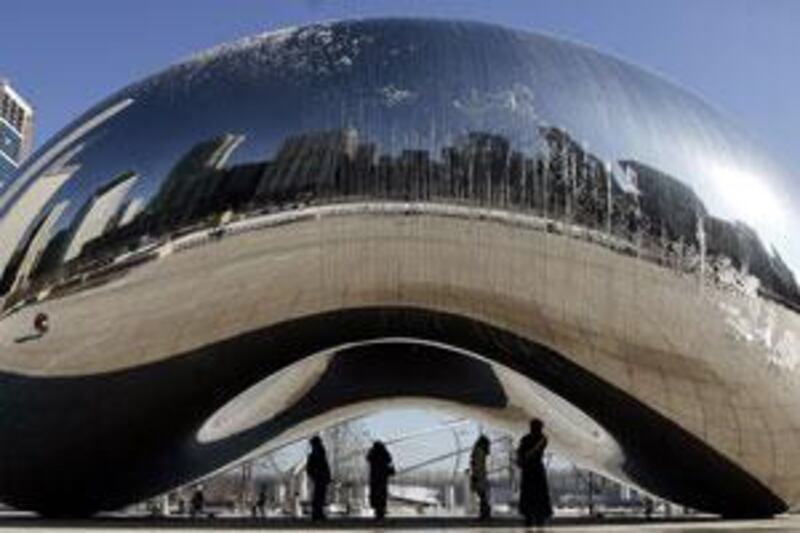ABU DHABI // The influential Indian sculptor Anish Kapoor has described the project to bring the Guggenheim Mueum to Saadiyat Island as "internationally significant", saying it could be the catalyst that enables the Middle East to one day challenge the cultural wonders of Europe.
"It symbolises the fact there is no longer one cultural centre in the world, a position held, at least emotionally, by Europe," he said. Mr Kapoor, who was born in Mumbai and whose work has been exhibited at the Tate Modern in London and the Guggenheim in Bilbao, was speaking in an interview ahead of his appearance tomorrow at the Guggenheim Abu Dhabi Series. Distinguished figures from the fields of arts and academics will talk about the role and aims of the Guggenheim Abu Dhabi in a programme of presentations and panel discussions starting today.
Mr Kapoor, who will discuss the role of the artist and the process of creating art, said the Saadiyat Island project would bring much more than art to the country. "It's a great opening up of what we've learned about culture," he said. "It reminds us all that culture reawakens interesting things like feeling like a citizen; it gives a sense of belonging, it renews intellectual endeavour, poetic endeavour. There shouldn't be anywhere in the world where this is absent."
Designed by the architect Frank Gehry, the Guggenheim will be the largest of a number of planned cultural institutions on Saadiyat Island, the epicentre of the emirate's cultural renaissance. Completion is scheduled for 2013. The series is part of the ongoing Talking Art programme that brings artists to the city. Among the other artists attending is Jeff Koons, an American whose controversial pop art includes Puppy, a 43ft tall topiarian sculpture of a West Highland Terrier made from a variety of flowers, and a life-size gold-leaf-plated statue of the singer Michael Jackson cuddling his pet chimpanzee. The Palestinian installation artist Mona Hartoum is scheduled to give a talk on Monday.
Mr Kapoor, who has lived for three decades in London, is renowned for his enigmatic sculptural forms. His work is displayed around the world. He defended Abu Dhabi's decision to import art and established brands, such as the Guggenheim and the Louvre. "In a place like Toronto, just say, where they have had two revitalised museums in less than five years, it's just like this part of the Arab world," he said. "Canada has its culture, but not all the art in those museums is Canadian. The idea that one would only be interested in art because it comes from where you are is ridiculous."
Often larger than life, Mr Kapoor's sculptures tend to be monochromatic, curved, and composed of reflective materials. "The artist is a particular kind of thing," he said. "Art is not a linear process, but it's one through which things are discovered rather than objects being made. The job of the artist is excavating slices of life." On his agenda for the Guggenheim Abu Dhabi Series is a discussion about the process through which an idea is carried to term. A better understanding of the artist and the artistic process, he said, can lead to a stronger appreciation of art.
"The process is a long-term engagement with certain issues that slowly come to have physical form." One of his best known projects, the Cloud Gate sculpture in Chicago's Millennium Park, is one such example. Discussions about this installation began about seven years before it was completed. "It's truly a 21st-century object in that it's impossible to make," Mr Kapoor said. "Making it happen was having a vision, holding on to that idea. And it's the same with Guggenheim Abu Dhabi."
He sees Saadiyat Island in the same way he approaches a big project or idea: ambitious, larger than life, possible. "What's important in this context," Mr Kapoor said, "seems to be the mood in which a cultural endeavour can change the way we see the world. In its own way it's like the art equivalent of putting a man on the moon. It's taking the human spirit forward." @Email:jhume@thenational.ae






